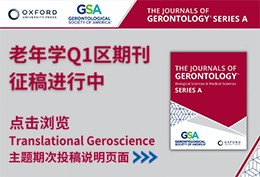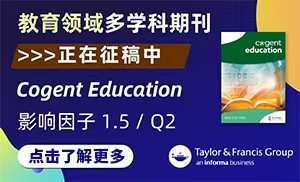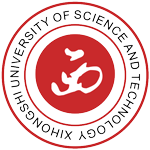当前位置:
X-MOL 学术
›
J. Am. Chem. Soc.
›
论文详情
Our official English website, www.x-mol.net, welcomes your
feedback! (Note: you will need to create a separate account there.)
Phase-Migrating Z-Scheme Charge Transportation Enables Photoredox Catalysis Harnessing Water as an Electron Source
Journal of the American Chemical Society ( IF 15.6 ) Pub Date : 2025-04-19 , DOI: 10.1021/jacs.5c02276 Ren Itagaki , Akinobu Nakada , Hajime Suzuki , Osamu Tomita , Ho-Chol Chang , Ryu Abe
Journal of the American Chemical Society ( IF 15.6 ) Pub Date : 2025-04-19 , DOI: 10.1021/jacs.5c02276 Ren Itagaki , Akinobu Nakada , Hajime Suzuki , Osamu Tomita , Ho-Chol Chang , Ryu Abe
Z-schematic photocatalytic reactions are of considerable interest because of their potential for application to reductive molecular conversions to value-added chemicals using water as an electron source. However, most demonstrations of Z-scheme photocatalysis have been limited to overall water splitting. In particular, it has been basically impossible to couple the reduction of “water-insoluble compounds” with water oxidation by conventional Z-scheme systems in aqueous solution. In this work, an unconventional Z-scheme electron transportation system with a “phase-migrating” redox mediator is constructed that enables photocatalytic conversion of water-insoluble compounds by using water as an electron/proton source. In a dichloroethane (DCE)/water biphasic solution, a molecular Ir(III) complex acts as a photoredox catalyst for the reductive coupling of benzyl bromide by using ferrocene (Fc) as an electron donor in the DCE phase. On the other side, an aqueous dispersion of a Bi4TaO8Cl semiconductor loaded with a (Fe,Ru)Ox cocatalyst photocatalyzed water oxidation using ferrocenium (Fc+) as an electron acceptor. Because the partition coefficients of Fc+/Fc are significantly different, the Fc+ and Fc generated by photoinduced electron transfer in each reaction could be selectively extracted to the opposite liquid phase. Spontaneous phase migration enables direction-selective electron transport across the organic/water interface that connects the reduction and oxidation reactions in the separated reaction phase. Eventually, photocatalytic reductive conversion of “water-insoluble” organic compounds using “water as the electron/proton source” was demonstrated through the step-by-step Z-scheme photocatalysis with the phase-migrating Fc+/Fc electron transportation.
中文翻译:

相移 Z 型电荷传输实现利用水作为电子源的光氧化还原催化
Z 示意图光催化反应具有相当大的兴趣,因为它们有可能应用于使用水作为电子源的还原分子转化为增值化学品。然而,Z 型光催化的大多数演示仅限于整体分解水。特别是,在水溶液中,基本上不可能通过传统的 Z 型系统将“水不溶性化合物”的还原与水氧化耦合。在这项工作中,构建了一个具有“相迁移”氧化还原介质的非常规 Z 型电子传输系统,该系统通过使用水作为电子/质子源来实现水不溶性化合物的光催化转化。在二氯乙烷 (DCE)/水双相溶液中,分子 Ir(III) 配合物通过使用二茂铁 (Fc) 作为 DCE 相中的电子供体,充当光氧化还原催化剂,用于溴苄的还原偶联。另一方面,负载有 (Fe,Ru)Ox 助催化剂的 Bi4TaO8Cl 半导体的水分散体使用二茂铁 (Fc+) 作为电子受体进行光催化水氧化。由于 Fc+/Fc 的分配系数存在显著差异,因此每个反应中光诱导电子转移产生的 Fc+ 和 Fc 可以选择性地提取到相反的液相中。自发相迁移能够实现跨有机物/水界面的方向选择性电子传输,该界面连接分离反应相中的还原和氧化反应。 最终,通过逐步 Z 型光催化和相迁移 Fc+/Fc 电子传递,证明了使用“水作为电子/质子源”的“水不溶性”有机化合物的光催化还原转化。
更新日期:2025-04-19
中文翻译:

相移 Z 型电荷传输实现利用水作为电子源的光氧化还原催化
Z 示意图光催化反应具有相当大的兴趣,因为它们有可能应用于使用水作为电子源的还原分子转化为增值化学品。然而,Z 型光催化的大多数演示仅限于整体分解水。特别是,在水溶液中,基本上不可能通过传统的 Z 型系统将“水不溶性化合物”的还原与水氧化耦合。在这项工作中,构建了一个具有“相迁移”氧化还原介质的非常规 Z 型电子传输系统,该系统通过使用水作为电子/质子源来实现水不溶性化合物的光催化转化。在二氯乙烷 (DCE)/水双相溶液中,分子 Ir(III) 配合物通过使用二茂铁 (Fc) 作为 DCE 相中的电子供体,充当光氧化还原催化剂,用于溴苄的还原偶联。另一方面,负载有 (Fe,Ru)Ox 助催化剂的 Bi4TaO8Cl 半导体的水分散体使用二茂铁 (Fc+) 作为电子受体进行光催化水氧化。由于 Fc+/Fc 的分配系数存在显著差异,因此每个反应中光诱导电子转移产生的 Fc+ 和 Fc 可以选择性地提取到相反的液相中。自发相迁移能够实现跨有机物/水界面的方向选择性电子传输,该界面连接分离反应相中的还原和氧化反应。 最终,通过逐步 Z 型光催化和相迁移 Fc+/Fc 电子传递,证明了使用“水作为电子/质子源”的“水不溶性”有机化合物的光催化还原转化。















 京公网安备 11010802027423号
京公网安备 11010802027423号